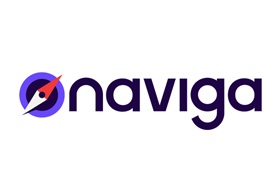Over the past year, it feels that daily we hear about ‘fake news’ and the growing problem it has created. Especially since both the Brexit vote and the US Presidential election occurred, the term has become synonymous with news regarding politics and/or politicians that is ‘seen as damaging to an agency, entity, or person.’ But while the term ‘fake news’ – the publishing and/or spreading of information with no factual basis, with the intention of creating shock and swaying perception – is relatively new, the concept and the commotion it causes is not, nor does it purely apply to politics. History is full of examples of bending the truth for political and economic gain, with examples appearing in both the Greek and Roman Empires. It has been more commonly referred to as false news, or in extreme cases as propaganda, and can be found across multiple disciplines.
Fake News in a Digital World
The digital age rapidly grew our ability to access multiple sources of information, which has included ‘fake news’ and it has unquestionably taken on a life of its own. The barriers to entry in today’s digital media landscape are incredibly low, where any ‘Joe-Smo’ can easily set up a site, write down whatever they like claiming it as ‘facts,’ and generate significant advertising revenue. The Reuters Institute found that the increasingly blurred lines of distinction between the following in the public eye have also added to the problem: ‘(1) news that is ‘invented’ to make money or discredit others; (2) news that has a basis in fact, but is ‘spun’ to suit a particular agenda; and (3) news that people don’t feel comfortable about or don’t agree with.’
The more recent growth of social media platforms has also added fuel to the fire, with the Reuters also finding that ‘users feel the combination of a lack of rules and viral algorithms are encouraging low quality and ‘fake news’ to spread quickly.’ This was seen in the influence of 2016 election voter behaviour, as it was founded that the popular fake news stories were more widely shared on Facebook than the popular mainstream news stories. Recently, both Facebook and Twitter have met with the US Congress to discuss the role their platforms played in the spreading of fake news which influenced the outcome of the election.
All of these factors put together have placed an increasing amount of pressure on those reporting, writing and distributing valuable information. This covers a wide range of job roles and organisation types, but journalists and publishers- especially in the mainstream media- are getting hit the hardest. Even when they follow their strict code of conduct, there is fear that accidentally reporting an inaccuracy (which can and does happen) or upholding international law protecting their sources will brand them with a ‘fake news’ label - even when they retract, correct and apologise in a timely manner. Fake news is also impacting other industries such as advertising, which have a strong relationship with publishers, with recent survey found that ‘96% of Advertisers are concerned about fake news in programmatic advertising.’ Conscientious readers are looking for trusted brands that produce quality information - regardless of if it’s news, academic research, pure interest, etc – and this matters now more than ever.
How brands can thrive in a ‘Post-Truth World’
Demonstrating trust and delivering value has always been a brand’s main goal and this of increasing importance in a world with growing fake news outlets. A recent study by MediaCom North and Magnetic found that 7 in 10 Britons trust magazine media over social media, with its key finding being that ‘if you want to deliver brand trust, use trusted media.’
The Media Insight Project also recently found that increasingly, millennials are more willing to pay for one or more news sources when they are provided with an engaging experience. Having this in mind and the fact that the majority of people today now consume information online, the main emphasis for brands is to bring the focus back to paid sources of quality content and information.
The Drum recently stated that in order ‘to rise above the noise and make a mark in consumers’ minds, strong and resonant brands have unique value.’ The production of quality content and information is definitely not cheap, but it is what consumers want in order to navigate the fake news epidemic and research has been proven that they are willing to pay for it. This is underlined by major brands such as the New York Times, Wall Street Journal, The Economist and The Financial Times all reporting significant growth in their digital subscriptions over the past year. We have also seen this with our own clients, with Centaur Media recently reporting increases in digital premium content subscriptions across their brands.
Delivering an engaging experience that builds brand trust and value to your audience relies on appropriate technology. Having an intelligent customer identity and access management (CIAM) system can help you to improve your digital engagement strategy. And with GDPR right around the corner, businesses can responsibly use their customer data to build trusted data-compliant relationships by driving high-quality original content to them at the right time, in the right place and format.
To learn more about how our platforms can help you deliver an engaging customer experience that provides value and trust to your audience, please get in touch.




